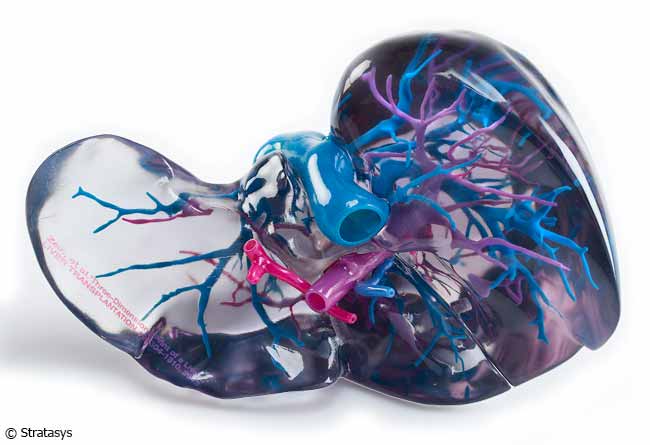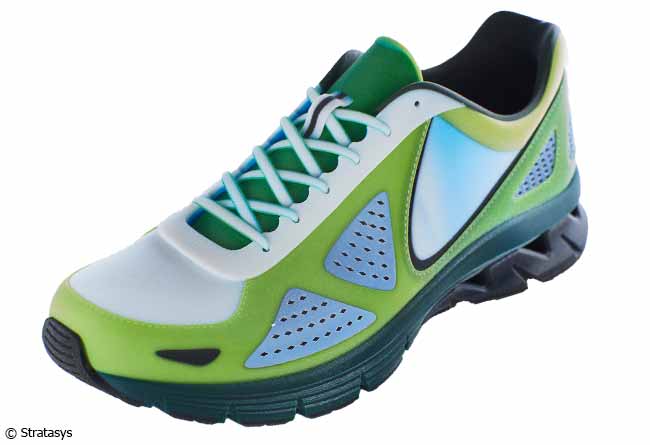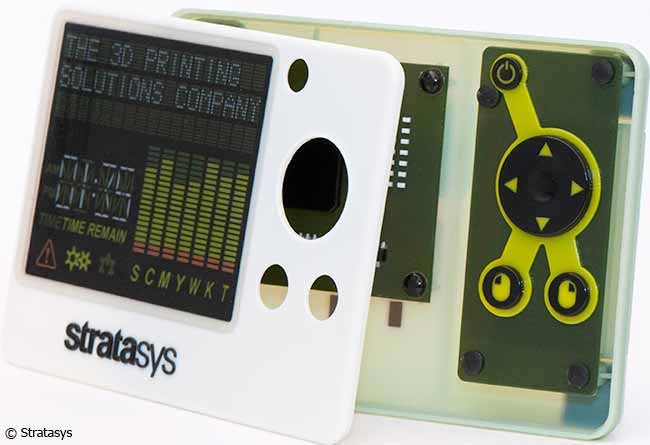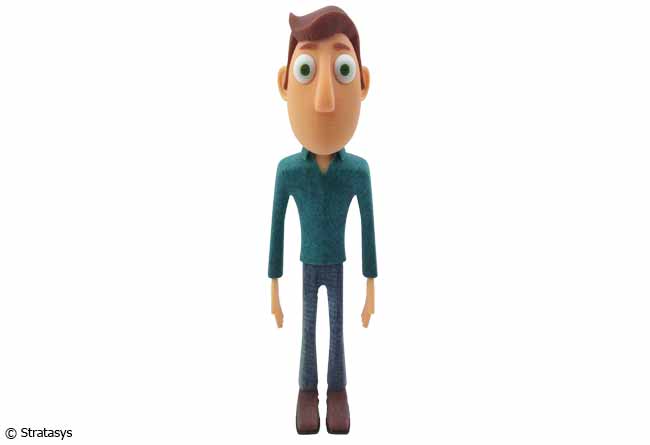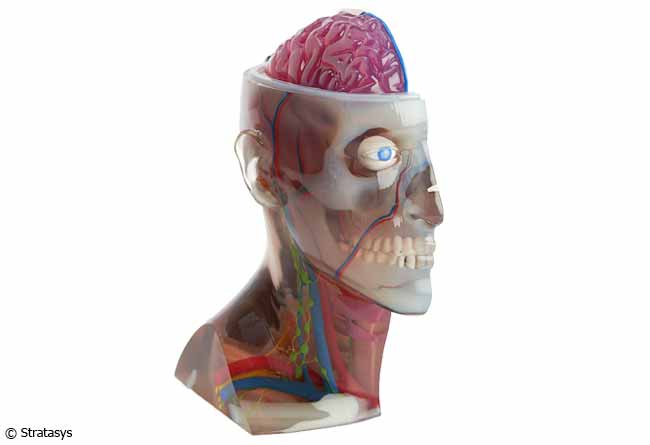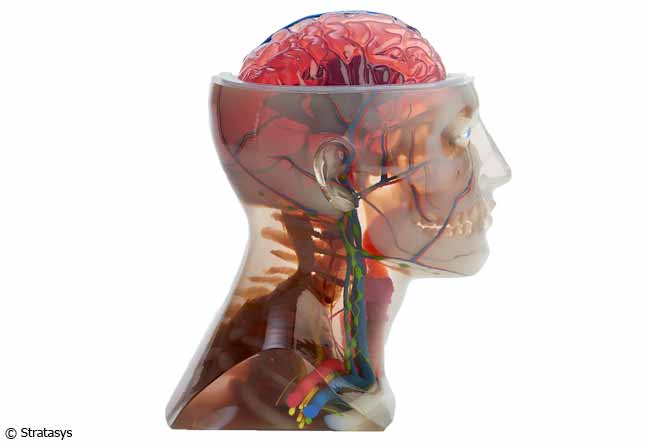Prototyping
3D PRINT POLYJET IN COLOR.

Stratasys’ latest Objet J750 printer generation is capable of printing colour models. The J750 features unique multi-material technology, which is the only 3D printing process capable of processing, combining and blending up to six different base materials simultaneously.
By blending multiple base materials, the J750 covers the entire CMYKW colour palette with more than 360,000 colours. These preset material blends are called digital materials. The digital materials have optimised colouring and mechanical properties, if needed. Thus, luminous and reproducible colours can be integrated into a single model.
You are able to produce extremely faithful prototypes with an unbelievable variety of materials. The J750 also allows the production of multi-component models with solid, rubbery and transparent parts in one model.
By blending multiple base materials, the J750 covers the entire CMYKW colour palette with more than 360,000 colours. These preset material blends are called digital materials. The digital materials have optimised colouring and mechanical properties, if needed. Thus, luminous and reproducible colours can be integrated into a single model.
You are able to produce extremely faithful prototypes with an unbelievable variety of materials. The J750 also allows the production of multi-component models with solid, rubbery and transparent parts in one model.
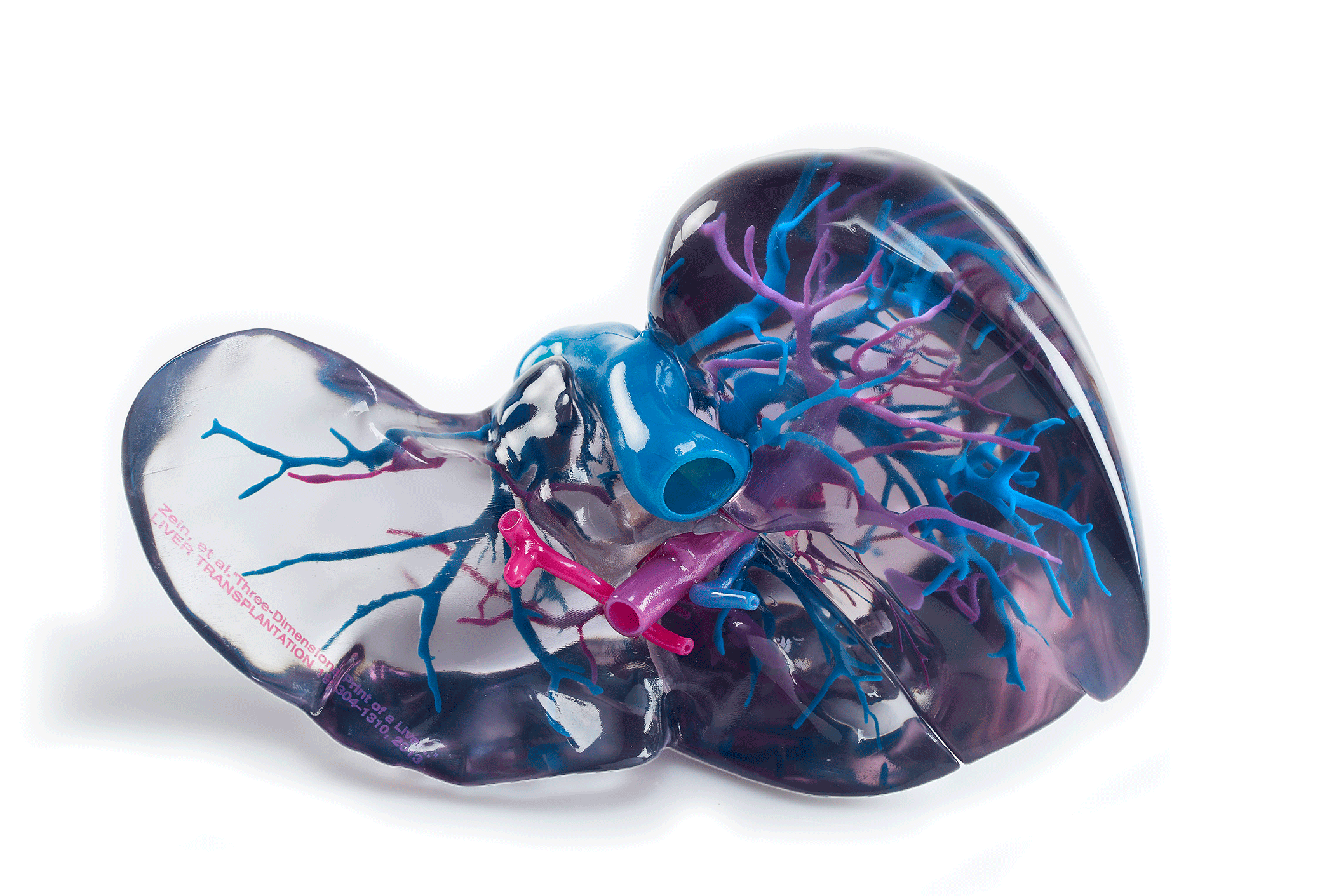
Benefits of 3D printing
How PolyJet works
The PolyJet 3D printing process works much like inkjet printing. Instead of spraying droplets of ink on a sheet of paper, the PolyJet 3D printer sprays the individual layers of liquid photopolymer (UV curable) onto a build platform.
The process is actually very simple:
Data preparation: the Objet software automatically calculates the placement of the photopolymer and the support material using a 3D CAD file.
Printing/modelling: the 3D printer injects minute droplets of the liquid photopolymer and cross-links them immediately with UV light. Fine layers are thus printed over each other on the build platform. This creates one or more precise 3D models. If overhangs or complex shapes need support, the 3D printer sprays removable support material.
The process is actually very simple:
Data preparation: the Objet software automatically calculates the placement of the photopolymer and the support material using a 3D CAD file.
Printing/modelling: the 3D printer injects minute droplets of the liquid photopolymer and cross-links them immediately with UV light. Fine layers are thus printed over each other on the build platform. This creates one or more precise 3D models. If overhangs or complex shapes need support, the 3D printer sprays removable support material.
Model processing/post processing
The support material can be easily removed by the user by hand, with water or in a solution bath. The models and components can be machined and utilised after removal of the backing material without having to post-cure.
Benefits of PolyJet 3D printing
PolyJet technology offers exceptional detail, smooth surfaces and precision.
Smooth, detailed prototypes can be created that convey the aesthetics of the final product. It is also possible to manufacture precise moulding tools, templates, stencils, and other manufacturing tools. Finally, complex shapes, elaborate details and fine surfaces can be achieved.
You can integrate a wide variety of colours and materials into a single model for unbeatable efficiency.
Smooth, detailed prototypes can be created that convey the aesthetics of the final product. It is also possible to manufacture precise moulding tools, templates, stencils, and other manufacturing tools. Finally, complex shapes, elaborate details and fine surfaces can be achieved.
You can integrate a wide variety of colours and materials into a single model for unbeatable efficiency.
